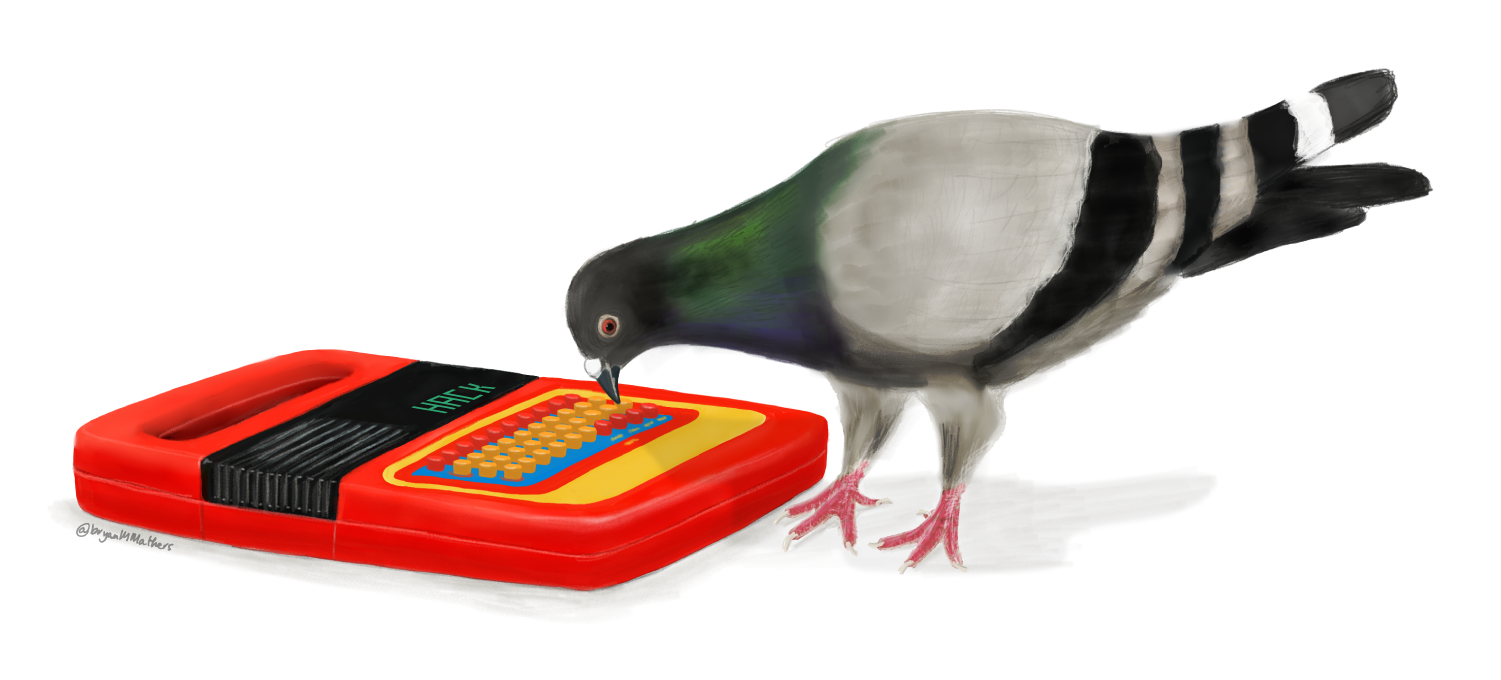Leaving Substack (Again)

This isn’t how I planned to end 2023 or start 2024. It’s not, to borrow from a grade school assignment, how I wanted to “spend my Christmas vacation.” But the owners of Substack have forced my hand with their open support for hate speech on the platform; so here we are, using a different application for you to read and me to write Second Breakfast.
Welcome to my new new newsletter.
Actually, I’m hoping very much that your experience, as a reader, is largely unchanged: you’ll still get an email from me a couple times a week (and/or you can visit the Second Breakfast subdomain at audreywatters.com). If you’re a paid subscriber, your payments will still be processed via Stripe – I have contacted Substack and told them that, as I’ve left their platform, they can no longer take their 10% cut.
That is to say, by subscribing to Second Breakfast, you are no longer supporting a platform that has, quite openly, come out in support of Nazis using and profiting from its site.
Honestly, it’s my bad for using Substack in the first place. I’d already left the platform once before, back in 2021, when it launched an initiative to pay a lot of well-known writers to use its product – many of whose whole schtick was fomenting anti-trans hate. Unsurprisingly, many of those same writers have been quite vocal recently in defending Substack’s so-called “free speech” stance. (Note: if you are promulgating hate and making excuses for people who do so, you are not committed to “free speech.” You’re hiding behind a rather faulty interpretation of the law and actively invested in silencing people.)
(Another note: if you are a Substack writer and interested in moving your newsletter, I will say that many of the company’s competitors have made it pretty easy to import your data – it took me less than 20 minutes to move to Ghost, which is an open-source tool that has a SAAS (software-as-a-service) option. It is taking a lot longer, admittedly, to get all the small details of the move finalized, and please let me know if you see something weird. Another alternative provider is Buttondown, which has come out with an explicit “No, we don’t let Nazis use our platform” stance. I mean, hell, last time I checked, Mailchimp is still around, yo.)
There is, of course, a downside to moving off of Substack – or so we writers are being warned right now by folks inside and adjacent to the company: with the demise of social media (particularly Twitter), you're going to struggle to find an audience without the “network effect” of Substack – that is, people will not be able to discover your work. (Ironically, many people who are trying to reassure writers that it’s necessary to remain on Substack so that people can find you don’t seem to grok that the Nazis too are quite keen to leverage this mechanism.)
I may or may not lose readers and potential readers with this move. I think it’s worth the risk. Ethics trump metrics every goddamn day. Moreover, I’m really not interested in the kind of audience-building that social media technology (and the publishing industry) demands we writers spend our time doing. Let’s not confuse “community” with click-throughs. (See: John Patrick Leary’s work on how late-stage capitalism and management-speak, particularly from the tech industry, drain words like “social” and “community” of their meaning.)
What I want to do is think and write. I’m going to focus on that in the new year, and I hope that my thinking and writing is good enough that, even without Substack — either its algorithms or its editors — surfacing and promoting my content, that people will continue to discover and read my work.
For a long time, I’ve been known as “ed-tech’s Cassandra” – I have a knack for accurately predicting the coming shit-storm (and then being belittled or ignored, which is, let me tell you, a fucking drag). So let me just state this as clearly as possible, here for the record: things are going to get worse – much worse – on Substack in particular but online and in tech (and in American society) more broadly in the year ahead. Indeed, 2023 has seen the continued ascent of fascist regimes globally. By supporting far-right content on this site, I think Substack’s owners are truly hoping that extremist rhetoric will drive traffic.
I am quite sad that it seems we have learned nothing from the grotesque misinformation and disinformation campaigns waged online in recent years (indeed, we’re hard-coding it into things like ChatGPT, but that’s a different apocalyptic vision for a different day) – the 2020 Presidential election, anti-vaccine nonsense, and so on. We have learned nothing from the ways in which far-right groups have organized and spread their messages online, thanks to the technology industry’s refusal to moderate content and their reluctance to deplatform hate. (De-platforming is necessary. And research shows too: it actually does work.). We have learned nothing from the right’s success in shifting the “Overton window,” in no small part because the media – both old and new – continue to profiled their members as stylish or reformed. Again, Substack has made it very clear that it hopes to be at the center of this narrative during the upcoming election cycle; the company and its investors believe that hate and controversy will be quite profitable.
Me, I’m not keen to participate in anti-democratic technologies – which does make this whole Internet thing, you know, a challenge.
Jonathan Katz, whose article in The Atlantic on the proliferation of Nazi content on Substack, kicked off some of the recent discussions about the problems with the company’s politics, has also documented the investment angle to all this – and if you’re familiar with my work on Hack Education, tracing venture capital’s role in shaping education technology, you know that I believe it’s crucial we pay attention to the ideologies and economies that undergird software/product development. What shapes the direction of technology is not “science”; it’s not what users – even high profile users who say they’re “in touch with the founders via email” – want; rather, the future of technology is often a reflection of the ideologies and the stories that its powerful investors believe in. One of the major investors in Substack, remember, is A16Z, the venture capital firm run by Marc Andreessen, who this fall laid out a vision of techno-fascism. His manifesto, still featured on the VC firm’s website, should give folks pause about where exactly Substack and more generally Silicon Valley hopes to be headed in the coming years – the direction they plan for us and for the future of technology.
It’s a shitty future for the vast majority of the people on this planet – a shitty future built on shitty software, for as Andreessen once put it “shitty software is eating the world.” (Maybe that’s not exactly how it put it.)
Way back in January of this year, Cory Doctorow addressed the “enshittification” of software: "Here is how platforms die,” he argued, “first, they are good to their users; then they abuse their users to make things better for their business customers; finally, they abuse those business customers to claw back all the value for themselves. Then, they die.” Anytime one adopts a new piece of technology, one needs to be ready for this – make sure, in the case of, say, an email newsletter provider, that you can export your subscriber list.
The “enshittification” framework reminds us that even if, as I’ve heard some folks say, Substack is “very nice” now, it’s unlikely to be “very nice” for long. Such is the arc of technology: it is short and bends towards bloat.
But when we think of what makes a piece of software a “shitty experience,” we can’t just look at the utility or usability of a site – how many pop-up ads or useless algorithmic recommendations we’re bombarded with, for example. It's obvious, if you're a marginalized person in any way, that almost all software is not designed for you – it's a shitty experience. As such, you might want to stop and think what's going on if the experience of Substack is “very nice” for you, particularly with the far-right and its supporters as a growing part of the user-base. I mean, Substack can have a beautiful interface for many years to come – it can make emailing thousands of readers super-slick and simple and "ka-ching" the subscription coins fall right into your checking account – but if there are writers welcome here who openly call for genocide, and if those writers bring in an audience who comes and comments on your posts and makes you a target of their violence, the software is absolutely a piece of shit – its design, its governing principles.
But hey, maybe this time I’m wrong and the year ahead will not be full of techno-authoritarian-enhanced violence! Maybe Substack will change, despite its investors being, quite literally, invested in a most wretched future!
At the end of the day (the week, the year) my work, at Second Breakfast and elsewhere, aims to help us think through how and why we got here and to examine where the tech industry wants to take us – how it wants to engineer our bodies and our brains. For me, for all of us, I think it’s going to be better (and safer) to talk about this somewhere other than Substack.
So Happy New Year. Here’s to fighting the good fight in 2024, however you decide to fight it.





